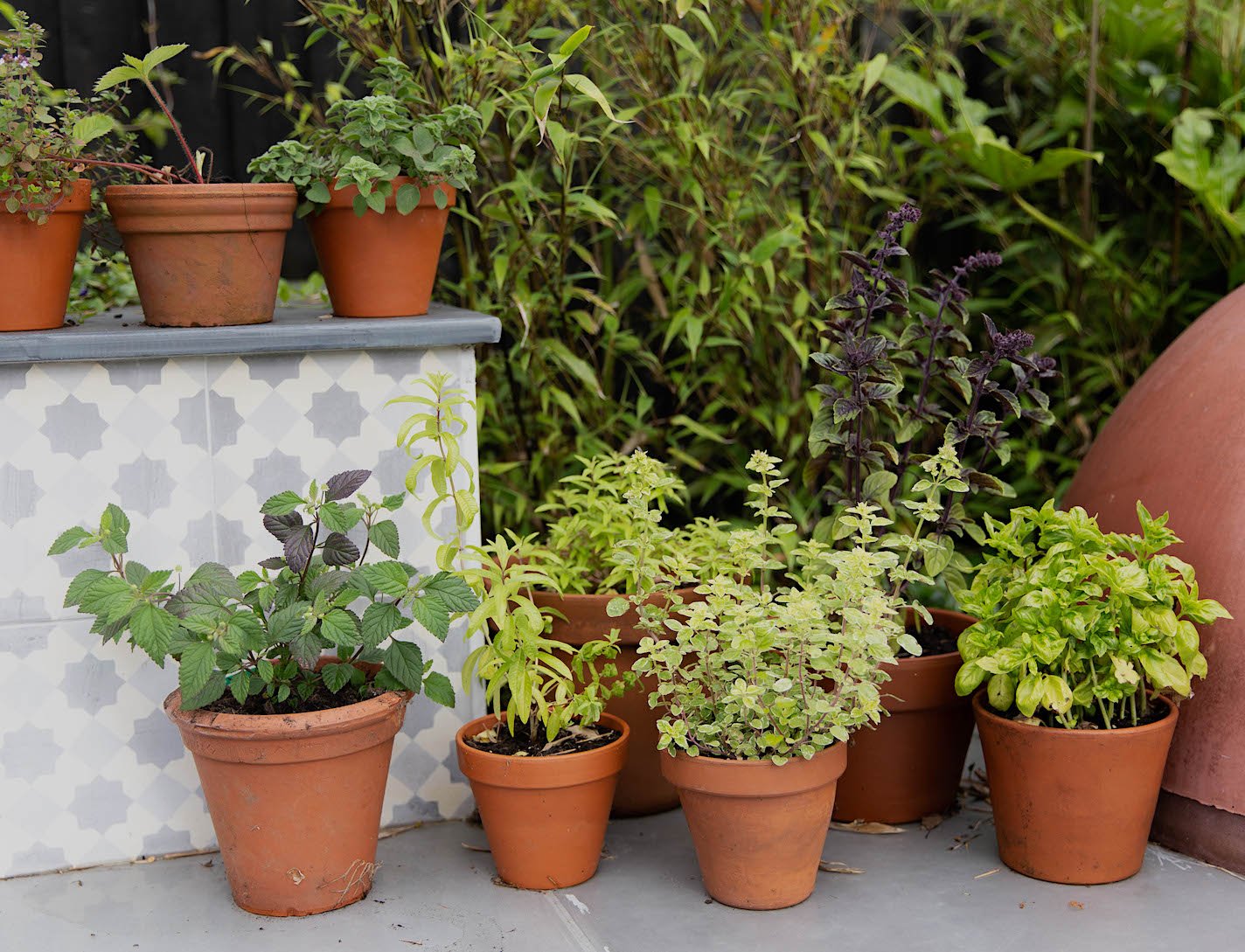Plant guide: Mint
Botanical name:
Mentha spp.
Mint is my absolute favourite herb. It is so easy to grow, looks stunning, smells incredible and is really versatile for cooking, garnishes and cocktails.
I use the foliage as a gorgeous scented filler for cut flowers, in tea, for salads, on new potatoes, and best of all in cocktails!
It’s a really easy plant to grow, as it needs almost no maintenance and is very quick to establish and really dig its roots in. On the flip side, it can quickly take over a garden, for all those reasons, so it tends to be best grown in a pot (or smaller raised bed) so that it can’t get out of hand.
Plant type:
Perennial herb
Growing conditions:
Mint does well in a range of conditions from full sun to part shade, though will need a spot with reliable in moisture in really sunny conditions. We always grow mint in pots, to make sure it doesn’t spread too far, so a pot filled with multipurpose peat-free compost in a part shaded position is ideal.
How to grow:
Mint is a perennial (it lives for a number of years) and is incredibly easy to propagate from a cut stem, or to grow on from a small plant. You can buy plants easily, especially in the Summer months, from nurseries, garden centres and supermarkets.
If you’re propagating it from another plant, you just need a stem of mint, strip the bottom few leaves off the stem and put it in water or straight into compost, where it will quickly grow roots.
Once your plant is established, plant it out into a pot outside.
Care:
Plants growing in pots always need more watering than plants in the ground, so keep it well-watered and, once established, pick it regularly. It will soon grow into a large bushy plant that will give you a constant supply of leaves from April to November, year after year.
After a few years, the plant may look a bit straggly and sorry for itself - take it out of the pot in spring and divide it in half. Re-pot half into the old pot with fresh compost and pot up the other half to give to a friend!
Picking:
As with most herbs, it’s best to cut off the tips of mint stems, which encourages the plant to grow bushy and spread out. Mint is a fast grower, so don’t worry too much about cutting a lot at once; it should quickly grow back.
Cut it just before you plan on using it, so the oils in the herb stay fresh.
Uses:
There are so many delicious and different ways of using mint in food or drinks. It’s well known as the perfect pairing for lamb: make it into a mint jelly for the winter months, or use it fresh with a touch of vinegar in the summer. New potatoes mixed with torn mint leaves, sea salt and a healthy knob of butter is one of the absolute delights of early Summer… And, of course, a huge range of cocktails rely on the fresh flavour of mint, most especially the mojito.
As well as eating and/or drinking mint, it’s great to go with cut flowers. We often add some mint leaves to home-grown bouquets, and especially love to use apple mint for this.
Favourite varieties:
There are many different varieties of mint (more than 600 apparently!) Some of our favourites include pineapple mint (for beautiful foliage), Moroccan mint (for tea), chocolate mint (for cocktails) and Corsican mint (Mentha requienii) – a very small low-growing mint that quickly forms a mat and works well as groundcover.






